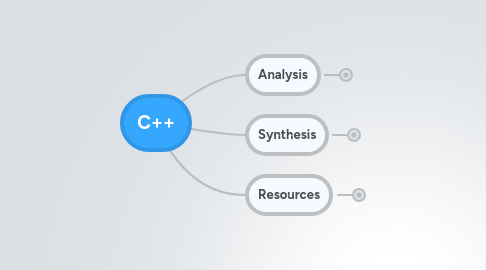
1. Resources
1.1. C++ Now
1.2. C++ Language Tutorial
1.3. MSDN C++
1.4. Inside the C++ Object Model
1.5. Google C++ Style Guide
1.6. IBM C++
2. Analysis
2.1. Syntactics Layer
2.1.1. Character Level
2.1.1.1. symbol
2.1.1.2. control
2.1.2. Lexical Level
2.1.2.1. white space
2.1.2.2. tokens
2.1.2.2.1. native tokens
2.1.2.2.2. foreign tokens
2.1.3. Grammatical Level
2.1.3.1. Sentence
2.1.3.1.1. namespace-declaration
2.1.3.1.2. class-declaration
2.1.3.1.3. function-declaration
2.1.3.1.4. object-declaration
2.1.3.2. trivia
2.1.3.2.1. Declaration vs Definition
2.1.3.2.2. Initialization vs Assignment
2.1.4. Liabrary
2.2. Semantics Layer
2.2.1. Preprocessor
2.2.1.1. Character mapping
2.2.1.1.1. trigraph
2.2.1.2. line splicing
2.2.1.2.1. first line \ next line
2.2.1.3. Tokenization
2.2.1.3.1. white-space
2.2.1.3.2. tokens
2.2.1.4. Preprocessing
2.2.1.4.1. #include
2.2.1.4.2. #define
2.2.1.4.3. #ifdef
2.2.1.4.4. #progma
2.2.1.5. Character-set mapping
2.2.1.5.1. execution character set
2.2.1.5.2. For Microsoft C and C++, both the source and the execution character sets are ASCII.
2.2.1.6. String concatenation
2.2.1.6.1. "String " "concatenation"
2.2.1.6.2. "String concatenation"
2.2.2. Compiler
2.2.2.1. Understanding Declaration Is Critical
2.2.2.1.1. Namespace
2.2.2.1.2. Class & Object
2.2.2.1.3. Function
2.2.2.2. executions and expressions are routine
2.2.3. Linker
3. Synthesis
3.1. Pragmatics
3.1.1. Style
3.1.1.1. Google C++ Style Guide
3.1.1.2. Google C++风格指南

